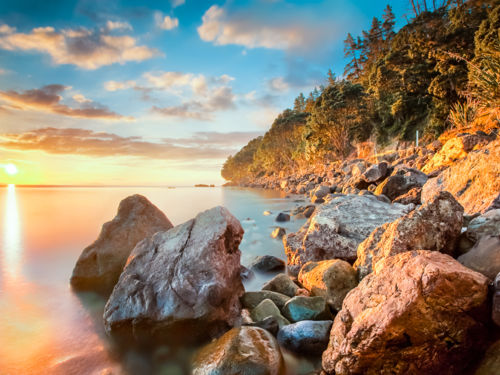Whangarei
17.89°C

Whangarei
17.89°C

Waitakere City
16.98°C

Manukau City
17.11°C

Papakura
24.46°C

Hauraki
17.26°C

Waikato
17.67°C

Matamata
18.46°C

Hamilton
17.51°C

Otorohanga
18.52°C

Rotorua
16.6°C

Taupo
15.44°C

Tauranga
19.27°C

Kawerau
18.6°C

Whakatane
19.64°C

Gisborne
15.51°C

New Plymouth
16.98°C

Stratford
8.97°C

Ruapehu
14°C

Wanganui
17°C

Palmerston North
16.41°C

Wairoa
19.19°C

Hastings
18.84°C

Napier
18.49°C

Masterton
15.49°C

Carterton
15.66°C

Porirua
15.99°C

Lower Hutt
16.45°C

Wellington
15.79°C

Tasman
9.35°C

Nelson
16.27°C

Marlborough
3.22°C

Kaikoura
15.48°C

Christchurch
12.59°C

Ashburton
12.52°C

Timaru
13.37°C

Waitaki
11.32°C

Waimate
13.08°C

Queenstown
12.38°C

Dunedin
14.33°C

Southland
9.98°C

Gore
11.31°C

Invercargill
12.06°C

Blenheim
14.73°C

Te Anau
27.35°C

Wanaka
11.17°C

Kaikoura
13.38°C

Stratford
13.54°C

Upper Hutt
15.9°C

About
Climbing the ladders and stairs to the steep rock peak in The Coromandel Ranges affords you a spectacular 360 degree view, with the sparkling sea in the distance. The walk to the Pinnacles Hut is less steep, and well worth the effort.
One of New Zealand's best overnight walks, staying in the largest Doc hut in the country. It can also be tackled as a day walk, about 6 hours round trip for reasonably fit walkers. The Pinnacles can be done in one day but then you'd miss the epic sunset and sunrises. The stunning Kaueranga Valley, located upriver from Thames is one of New Zealands true hidden treasures. Of the many popular historic walks in the foothills of the valley, the Pinnacles walk rates as one of New Zealands most popular overnighters, with an 80 bed DoC hut often booked out well in advance. If you're heading to The Coromandel for a holiday make sure you add The Pinnacles to your must do list.
Time: 25 min loop
Track category: Easy: Grade 2
The trail starts from Hotoritori Campsite and is the main trail from which all other trails branch from. It follows a metal forestry road, then branches left to continue up a gentle hill section. This steepens for about 150 metres before coming to an old skid site plateau. From here the trail undulates in a large arc back to itself and finishes with a small creek crossing which is ride-able.
This track splits into a hard and easy option about ¾ of the way along, which gives more skilled riders a small downhill technical section before re-joining the main track.
Time: 20 min
Track category: Intermediate: Grade 3
This is the first trail to branch off Kim’s Track, at the second old logging skid site, shortly after the small bridge crossing.
The trail starts with a steep but ride-able 200 metre metalled hill section, then veers sharply left to follow an undulating but mostly downhill trail on a Manuka covered ridge to re-join Kim’s Track at the third old skid site. From this skid site riders can continue on Kim’s Track to the right or go straight in to Split Ens.
Time: 20 min
Track category: Intermediate: Grade 3
This trail winds its way down the hill to a point where it splits. Here riders have the option of going left back to the small bridge on Kim’s Track, or going right to the exit trail which is the last part of Kim’s Track.
Time: 15 min
Track category: Intermediate: Grade 3
Graeme’s Grind is on the left, off Kim’s Track, just before the exit trail. It's a slightly technical climb back up the hill. From here:
Hotoritori Campsite is the first camp on the left, 3 km past the Kauaeranga Visitors Centre.
The track follows formed gravel road for 600 metres before heading into regenerating bush. Be prepared to get your feet wet as there are several stream crossings. About 25 minutes from the start a short side track leads across the stream to the old Monowai Goldmine battery site.
Further up the main track the forest becomes more luxuriant and diverse. A 10-minute climb further up the ridge takes you to a stand of mature kauri.
The Kauaeranga Valley was once adorned with magnificent kauri trees. Favoured for its thick, straight trunk and durable knot-free timber, kauri was highly sought after by early settlers.
The abundance of kauri in the valley drew pioneering bushmen to the area. From the 1870s bush camps were set up throughout the valley and the area was logged extensively over the following 60 years.
When all but the most inaccessible kauri within the valley had been logged, the tramline was pulled up and the dams, bush camps and other relics gradually fell into ruin as the forest slowly began to recover. In 1970 the remaining sections of native forests were protected as part of the Coromandel Forest Park.
Of the many structures built by kauri bushmen, the driving dams have proven the most durable, and are arguably the most distinctive and evocative relics of the industry.
Over 60 dams were built in the Kauaeranga Valley. However, today only one, Dancing Camp, remains substantially intact. If you want to see how the dams worked there is a one third scale working replica just ten minutes walk from the visitor centre.
The Dancing Camp dam is 5 minutes from the Pinnacles Hut, on the Kauaeranga Roadend - Pinnacles Hut section of the Kauaeranga Kauri Trail.
Although Dancing Camp is one of the more substantial remaining dams prior to partial restoration work in 1994 its condition was fair (Pearson 1994:7). Virtually all the faceplanking had disappeared and many of the main stringers and rafters had collapsed or had extensive sections of rot.
A Conservation Plan was prepared (Pearson 1994) and the work (partial restoration) and timber treatment was undertaken in 1995 (Ritchie 1995). Since then there has been one retreatment (CD50) in 1998.
Dancing Camp dam was built by Jim Angel in 1924, towards the end of the period when driving dams were extensively used. Between 1918-1928 some 27 million linear feet of kauri was removed from this area in the upper reaches of the Kauaeranga Valley. It was one of 9 dams which drove logs down to booms in the lower valley.
Over 30,000 super feet of kauri, enough for three 3 bedroom houses, were used in its construction (Haywood 1978:30).
Of the many structures built by pioneer kauri bushmen including camps, shanties, log chutes, trestles and skid roads, the driving dams have proven the most durable, and are arguably the most distinctive and evocative of the industry as a whole. They were an essential part of the kauri industry for recovering logs in difficult back country.
Although over 60 dams were built in the Kauaeranga valley, only two (Dancing Camp and Christmas Creek) remain substantially intact. Dancing Camp dam was the second largest in the Kauaeranga after the Main Dam.
The Dancing Camp dam is classified as a stringer dam because it was planked vertically, the boards being nailed directly into the stringers (major horizontal beams). Dams such as Dancing Camp were also known as flume dams because the floor and sides of the gateway were planked to prevent the bank and backlegs of the dam being washed away and to minimise log jams as the water surged through when the gate was tripped.
Kauri dams developed into highly ingenious reusable structures unique to this country.
When Europeans first arrived in New Zealand kauri trees grew in abundance from the Kaimai Ranges to the far north covering some 1.2 million hectares.
Although Māori used kauri and kauri gum no significant impact on the resource occurred until the late 1700s when British vessels were sent to NZ to obtain spars for sailing ships.
By the 1830s, it was being sawn into boards for export and the local market. In 1903 340,000 cu metres was milled, approximately 40% of it being exported. Much of the timber used in the reconstruction of San Francisco after the 1905 earthquake and fire was kauri imported from New Zealand.
Kauri logging was New Zealand's first major land-based export industry (excluding whaling & sealing); consequently associated technologies such as the driving dams are an important historic element of one of our pioneer industries.
180m high, officially the tallest waterfall in the North Island, Billygoat Falls is located in Kauaeranga Valley, Coromandel Peninsula. Despite the fact that only parts of the waterfall can be seen, the falls are still ones of the most impressive in the North Island.
From the road end car park, walk to the swing bridge to cross the Kauaeranga River. Take the first track on your right which leads you for 5 minutes to Billygoat Landing. Here you see good views of the Billygoat Falls (180 m high).
Duration: 4-5 hours return
Distance: 10km Return
The 15th largest kauri on the Peninsula is found just west of the Tapu-Coroglen road summit. Estimated to be 1200 years old, this tree has an unusual square-looking shape. The walking track to the tree is short but steep; from the viewing area visitors get good vistas across to Maumaupaki (Camels Back) on the main Coromandel Range. Time: 20 minutes return. Tip: The track is metal and has 187 steps
New Chums Beach is a beach in the Wainuiototo Bay on the northeast coast of the Coromandel Peninsula, New Zealand, near Whangapoua.
The northeast-facing beach is accessible only by boat or via a 30-minute walk on a partly unformed track along the coast from the estuary at the northern end of Whangapoua Beach. New Chums Beach is flanked to the north by the 171 m tall Pukenui and to the southeast by the rocky Motuto Point rising to 85 m.
The hills behind the 1 km long white-sand beach are undeveloped and covered in native bush, adding to its unspoiled appeal. In 2006, New Chums Beach was named one of the top 20 deserted beaches in the world by Britain's The Observer and highly rated by Lonely Planet and National Geographic.
In 2010, plans were drawn up to develop 20 houses, a boatshed and ramp on land owned by a Queenstown developer. These were met with considerable resistance, leading to various campaigns to save the beach and surrounding land from any development, as it is one of the last sizable undeveloped beaches in the area
Mercury Bay is a large V-shaped bay on the eastern coast of the Coromandel Peninsula on the North Island of New Zealand. It was named by the English navigator Captain James Cook during his exploratory expeditions. It was first named Te-Whanganui-a-Hei, the great bay of Hei, by the Māori.
On 9 November 1769 Cook landed on the shores of the bay to observe a Transit of Mercury. In 1919 an area of land around Shakespeare Cliff was set aside, and a small memorial was constructed, based on the erroneous notion that it was the location of Cook's observations. But the actual site of Cook's landing and observation was the eastern end of Cook's Beach, near the Purangi estuary. A smaller memorial plinth was established there also.
The brig Trial and the schooner Brothers were attacked by maoris on 20 August 1815 in Mercury Bay, when several sailors were killed. The bay was the resting place of HMS Buffalo, a ship that transported passengers and prisoners to Australia that was wrecked in a storm in 1840.
The mouth of Mercury Bay is ten kilometres across, and its coastline extends some 20 km. On the shore of the bay is the resort town of Whitianga, and a natural harbour is formed by an arm of the bay which extends inland a further six kilometres southward. Several small islets are located at the southern and northern extremities of the bay, and the Mercury Islands are 10 km to the north. The Whanganui A Hei (Cathedral Cove) Marine Reserve is in the southern part of the bay.
Named locations along Mercury Bay include Buffalo Beach, Wharekaho, Ferry Landing, Shakespeare Cliff, Lonely Bay, Flaxmill Bay, Cooks Beach, Purangi Estuary, Cathedral Cove and Hahei.
Mercury Bay is a good location for game fishing, with the Mercury Bay Game Fishing Club being one of the largest in New Zealand. The bay is also widely known for its yachting. The Mercury Bay Boating Club in Whitianga was the challenging club in New Zealand's first challenge for the America's Cup, in 1987.
Hahei is a small settlement in Mercury Bay on the eastern side of the Coromandel Peninsula in New Zealand. It is near Cathedral Cove, between the settlements of Cooks Beach and Hot Water Beach. It is approximately 11 km south east of Whitianga and 8 km north of Hot Water Beach.
The driving route to Whitianga from Hahei is circuitous and takes approximately 30 minutes. An alternative route is by road to Ferry Landing, which takes 15 minutes, and then a short passenger ferry trip to Whitianga. A ferry service to Whitianga has served the eastern Mercury Bay area since 1895.
Hahei is a popular holiday destination, with a white sandy beach and sheltered aspect, resulting in safe sheltered swimming waters. Its resident population is around 300, but in peak holiday periods the population swells to more than 10 times this. On the southern end of the beach is Te Pare Historic Reserve, which was once the site of two Māori pā, Hereheretaura Pā and Hahei Pā.
Hahei is located close to the start of the Cathedral Cove walkway and in the peak has nearly 500,000 day trippers and visitors who come just to visit the Cove. This can lead to congestion and parking issues.
Otama Beach is a beach on the northeast coast of the Coromandel Peninsula, New Zealand, 20 km north of Whitianga.
The north-facing 2 km long white-sand beach is backed by a large protected natural dune system, separating it from the road and farm land beyond. Access is via Black Jack Road, starting from State Highway 25 at Kuaotunu, which is sealed up to the start of Otama Beach. It continues as a gravel road further east towards Opito Bay.
Otama Beach is almost completely undeveloped, with only a small number of houses, mostly holiday homes, dotted around the hills behind the eastern end of the beach. The white sand squeaks when walked on, and the beach is a very good swimming beach, occasionally with good conditions for surfing. The rolling dunes and the wetland nature reserve behind it are protected, containing delicate flora such as the rare sand tussock, and nesting areas of the endangered New Zealand dotterel.
With each twist and turn you are rewarded with some spectacular views out to the Mercury Islands and beyond. An annual pilgrimage of family and friends are attracted to these special places and their waters as they provide a great playground for swimming, snorkelling, diving and a raft of boating activities.
Opito Bay hosts some significant local Ngati Hei, Maori history at Opito Point headland Pa, which dates back to 1500. Opito Bay is now home to a very small resident population and visitors during summer who are accommodated in a raft of holiday homes ranging from modest to more upmarket.
Pauanui Beach is one of the all time popular holiday spots in The Coromandel. During the weekend you'll find the beach busy with walkers, dogs and kids, surfers, paddle boarders and sun bathers. There are also protected dotterel birds that nest along the sand dune. Pauanui Beach is a great option for a leisurely walk, a romantic sunrise or a photo opportunity.
SURFING PAUANUI: On the water you'll find a friendly break for surfers, which is great for learning and a right hand point break for the more experienced.
SAFETY: Pauanui Beach is patrolled by Surf Life Saving NZ in the summer. Remember to swim between the flags.
ACCESS: There is parking on the beachfront at the south end with good access for mobility impaired visitors, also at the north end, Royal Billy Point, from where the Tairua-Pauanui Ferry also operates in the holiday season.
Waikawau Bay Beach is a long sandy surf beach with access to the beach through the DOC camp ground.
The beach is not as affected by the tides unlike the western side of the peninsula. The beach, on a good day has a great surf break.
It is about 1 hour drive, 36.9 km north east of Coromandel Town.
Cape Colville is the northernmost point of the Coromandel Peninsula in New Zealand's North Island. It lies 85 kilometres north of Thames, and 70 kilometres northeast of the city of Auckland, on the other side of the Hauraki Gulf. The small settlements of Port Jackson and Fletcher Bay lie immediately to the west and east respectively of the cape.
Located beyond Port Jackson campsite, this stunning coastal walk leaves the Muriwai Hilltop car park and heads along a benched farm track along the ridge towards Wharekaiatua Pa. This stunning coastal walk leaves the car park and heads along a benched farm track along the ridge towards Wharekaiatua Pa. Domed topped bollards mark the walk as it is formed and grassed.
You will see views across to Great Barrier and the Hauraki Gulf. Follow along the track until you get to Muriwai estuary (note this is easier to cross at low tide) and continue along the beach until you get to the boat ramp at Port Jackson campsite. Walk through the campsite and head back up Fletcher Bay Road to the Hilltop car park or turn around and return via the Muriwai walk. Head to Port Jackson, 58 km north of Coromandel. From Coromandel take the Colville Road for 22 km until the Whangaahei Junction, then turn left and follow the Port Jackson Road for 28 km until you get to Fantail Bay. From Fantail Bay follow the road for a futher 8 km. Drive along Fletcher Bay Road past Port Jackson campsite and up to the Muriwai Hilltop car park.
Please take caution in windy and wet weather as this walkway/track is exposed to the elements.
The walking track follows an easy grade. Return the same way, or create a circuit using the Coromandel mountain bike track but note this is much steeper and slippery in places.
The coastal walk between Stony and Fletcher Bays crosses farmland and goes through coastal forest with views of the Pinnacles, Great Barrier Island (Aotea Island) to the north and Cuvier Island (Repanga Island) in the east. The track follows an easy gradient with a short steep section in to and out of Poley Bay. It is part of an old bridle path formed by early pioneers to link the two bays. Swimming here is hazardous because of submerged rocks.
This walk will take approximately 7 hours in total, and is 20kms return journey.
The more challenging mountain bike track follows a stock route across farmland and regenerating forest, and rewards walkers with spectacular views of the ranges and islands of the Hauraki Gulf from the top of the track. For mountain bikers, this is a steep traverse, often slippery and challenging and only suitable for advanced riders and people with a good level of fitness.
From Stony Bay campsite, orange triangles mark the track, which turns left at the ford and past the two houses. The track continues over farmland for a short distance and then heads up a steep clay track.
Allow 1 hr 30 min to reach the top. Following the fenceline down, there are views of Port Jackson and Fletcher Bay. The two tracks meet below a historic shepherd's hut just north of Poley Bay and from there it is another 40 min to Fletcher Bay. Returning back to Stony Bay from this point will take about 2 hr 30 min. Cell phone coverage is limited.
Nestled on New Zealand's picturesque Coromandel Peninsula, Cathedral Cove is a coastal gem that beckons with its unparalleled beauty and serene charm. This captivating destination has earned its name from the colossal natural archway that stands as an awe-inspiring gateway to nature's wonders.
The journey to Cathedral Cove is as enchanting as the destination itself. A leisurely hike through lush native bushland unveils stunning viewpoints, where you can savour panoramic vistas of the sparkling Pacific Ocean. Along the way, you'll encounter pristine, white-sand beaches, like Gemstone Bay, perfect for a refreshing swim or a peaceful beachcombing adventure.
As you approach Cathedral Cove, you'll be greeted by the majestic limestone arch that frames the azure waters and golden sands beneath. This geological marvel is a testament to the Earth's artistry, a cathedral-like cavern carved by the relentless forces of nature.
The inviting waters of Cathedral Cove beckon for kayaking and snorkelling, revealing a vibrant marine world teeming with life. Above, the lush surroundings offer ideal picnic spots and opportunities for exploration.
Cathedral Cove is not just a destination; it's a sanctuary of natural elegance, a place where time seems to stand still. Whether you're seeking adventure, relaxation, or simply a connection with the natural world, Cathedral Cove invites you to uncover its hidden treasures and bask in its tranquil beauty.
Discover a truly unique experience in the beautiful beach side town of Hot Water Beach. Located on the east coast of the Coromandel Peninsula, it’s become world famous for the naturally occurring hot springs at low tide. With views out over the Pacific Ocean, explore the wonderful coastline with its abundance of native sealife and wildlife.
Hot Water Beach also offers a number of beautiful restaurants and cafes to savour local food and drink. An artspace and local gift shops are spread across the town as well as a wide range of accommodation options including a campground, bed & breakfasts, self-contained apartments and holiday homes to suit every budget. There is no better place in the world to come and explore!
Hot Water Beach is one of the most iconic locations on the globe. With dramatic surf waves as the backdrop and a beautiful long white sandy beach, it makes for an impressive sight. Hot Water Beach provides an experience like nothing else, geothermal activity creates pockets of heated water bubbling up from under the surface of the sand. At low tide, these pockets can be reached with a spade and a hot pool can be made for you and your friends. There is nowhere else like this in the world and Hot Water Beach is known as a place of wonder for locals and visitors, right here in the Coromandel!
Choosing the right the time
Two hours either side of low tide is the ideal time to visit and begin digging. Usually you will find other groups of people looking to do the same, so to guarantee a spot it is best to get there early.
Where to park
There is a main car park at the southern end of Hot Water Beach which is pay and display. Located in the carpark are public facilities including restrooms and showers, which have been recently upgraded. It’s a 24 hour carpark and there is a small fee to park there. It is safe to leave your car here as it is securely monitored.
What you need
Hire a spade or shovel from nearby and get ready to dig! You may also want a beach towel, sunblock or a refreshment before you begin your journey to the Hot Water Beach hot pools. We have everything you need at one of the local shops close by!
Where to dig
Look for the steam coming off the beach and the groups of people eagerly digging away at small pools by the waters edge. The water can get very hot (up to temperatures of over 60 degrees Celcius) so be careful. Hot Water Beach is known as a surf beach in New Zealand so the sea can be dangerous at times. Swimming between flags is advised and be cautious when cooling off in the waters edge as rips can be strong. Please make sure children, friends and family are supervised at all times.
Ngati Hei (The local iwi/tribe at Hot Water Beach)
Ngati Hei are the iwi along this coastline in the Coromandel, New Zealand. It is said that Ngati Hei populated this area for one thousand years. Ngati Hei along with the locals and residents ask for the following common courtesies:
Please use the toilet facilities located at the car parks
Pick up any trash left behind in the area
Please do not eat or drink in or close to the hot pools
Surfing Hot Water Beach
Hot Water Beach is a great place to surf and can also be used for learning. There is a moderate sized swell and a right hand wave forms at the southern end of the beach. There are businesses by the beach with surf equipment, advice and even private lessons for groups or one-on-one’s. Boards are also available for hire as well as wetsuits, paddle boards, body boards and much more!
Nestled within the pristine beauty of New Zealand's Coromandel Peninsula, Stingray Bay is a hidden coastal jewel waiting to enchant visitors with its unparalleled charm. This idyllic bay, embraced by lush native forests, offers a tranquil escape that feels like a secret world of serenity and natural wonder.
Stingray Bay, aptly named for its remarkable inhabitants, is a sanctuary for these graceful creatures. With shallow, crystal-clear waters, it provides a unique opportunity to witness these majestic stingrays as they elegantly glide through the bay's pristine shallows. It's a surreal and unforgettable encounter with the marine world.
For those seeking adventure, Stingray Bay offers superb kayaking and paddleboarding opportunities, allowing you to explore the bay's rugged coastline and hidden coves. The surrounding walking trails take you through dense native forests, revealing spectacular views and a chance to connect with nature.
Stingray Bay in Coromandel is more than just a coastal destination; it's a gateway to nature's beauty and a tranquil escape from the bustle of modern life. Whether you're a wildlife enthusiast, a nature lover, or simply seeking a peaceful retreat, Stingray Bay's unspoiled beauty and captivating marine life await you on the Coromandel Peninsula.
Gemstone Bay is another beach on the track out to Cathedral Cove from Hahei beach. This little bay has amazing snorkelling opportunities to see stingray, snapper and many other sealife that inhabit the area. Gemstone Bay does not have a beach per say, it is all rocks, so getting in and out of the water isn't an easy stroll. Definitely plan to snorkel here on a sunny, beautiful day as when winds are up and the waves are crashing the visibility in the water is not great, and could be dangerous.
Nestled within the heart of New Zealand's Coromandel Peninsula, Wentworth Valley is a hidden gem waiting to be explored. This enchanting valley is a sanctuary of lush greenery, pristine waterfalls, and tranquillity. As you venture into its depths, you'll be captivated by the soothing sounds of babbling streams and the rich, native flora that surrounds you.
Wentworth Valley offers a serene escape for those seeking respite from the hustle and bustle of modern life. Meander along meandering forest trails, leading you to cascading waterfalls like the picturesque Wentworth Falls, where you can take a refreshing dip in crystal-clear pools.
History buffs will find intrigue in the remnants of the area's gold-mining past, with relics and stories of the Coromandel's once-booming gold rush waiting to be discovered. Whether you're a nature enthusiast, a history buff, or simply in search of a tranquil retreat, Wentworth Valley invites you to lose yourself in the natural beauty and captivating tales of this serene corner of New Zealand.
Nestled on New Zealand's picturesque North Island, Coromandel Forest Park beckons with its untamed beauty and enchanting landscapes. This pristine wilderness, spanning over 85,000 hectares, is a sanctuary for nature enthusiasts and adventurers alike. Towering kauri trees, ancient ferns, and a symphony of birdlife create a rich tapestry of biodiversity within its boundaries.
Coromandel Forest Park offers a myriad of outdoor pursuits, from serene bushwalks along well-marked trails to challenging hikes that reveal breathtaking vistas of the rugged Coromandel Peninsula. Explore hidden waterfalls, crystal-clear streams, and the mystical, moss-covered boulders of the famous Cathedral Cove. For those who crave adventure, the park presents opportunities for mountain biking, rock climbing, and even gold panning in the region's historic goldfields.
Discover the secrets of Coromandel Forest Park's captivating past, where the tangata whenua (indigenous Māori people) have thrived for centuries. Their cultural heritage is woven into the land, waiting to be explored and respected.
Whether you seek tranquillity amidst nature's grandeur or adrenaline-pumping escapades, Coromandel Forest Park invites you to immerse yourself in the wonder of New Zealand's pristine wilderness, where every step unveils a new chapter in this natural masterpiece.
Embark on a thrilling 3.5-hour sailing adventure with Boom Sailing and discover the wonders of the Coromandel coastline like never before! Join our jump-on charters aboard our spacious 35" coastal racing catamaran, the ultimate sailing machine designed for safety and stability, catering to guests of all ages. Choose between morning and afternoon cruises to explore the stunning Coromandel scenery, including a close-up encounter with the iconic Cathedral Cove. Dive into the marine reserve for a swim or snorkel, surrounded by abundant sea life. Your journey includes light refreshments and a complimentary beverage, ensuring you stay energized while soaking in the spectacular views. Relax on the expansive trampoline decks, taking in the breathtaking landscapes or participating in the thrill of sailing. Our eco-friendly approach offers a low-impact way to appreciate the natural beauty of the Coromandel. Whether you're a sailing enthusiast or a first-time adventurer, Boom Sailing provides the perfect blend of excitement and relaxation. Join us for an unforgettable experience, where the beauty of the Coromandel unfolds before your eyes.